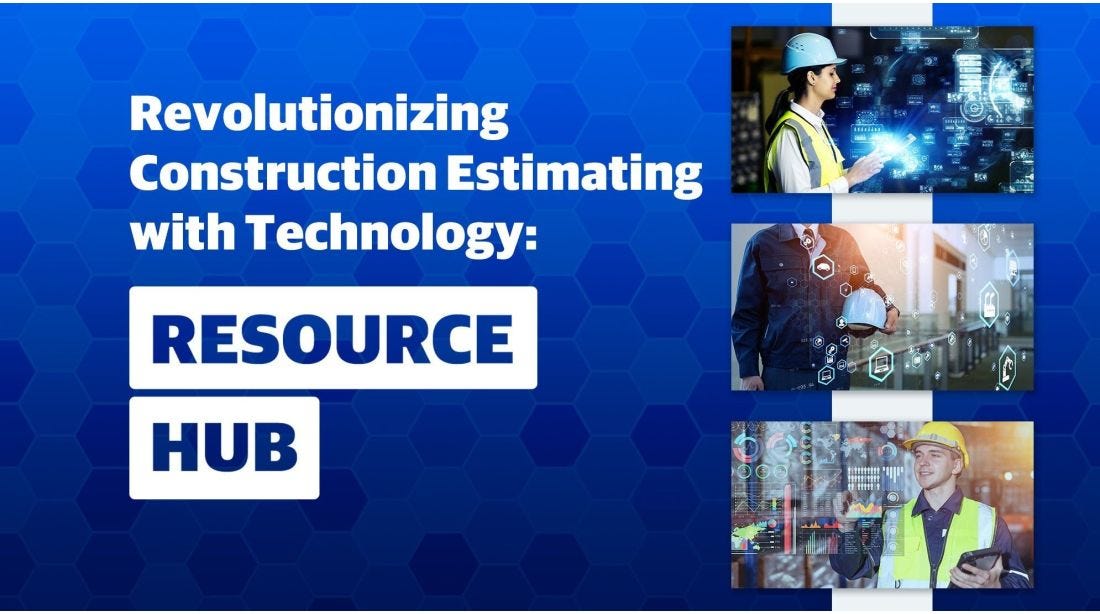Tips for Overcoming Barriers to Construction Technology Adoption
Embracing innovative technologies isn't just about keeping up with the times; it's about leveraging tools that enhance budgets, efficiency and sustainability. Implementing various construction technologies can streamline operations, reduce waste and lower costs, driving projects to completion faster and more effectively. However, challenges such as high initial costs, workforce training and integration issues often hinder the adoption of these new technologies.
Discover how overcoming barriers to construction technology adoption can pave the way for a transformative future.
What Is Construction Technology?
Construction technology are innovative tools, machinery, software and processes to improve all aspects of construction projects. It's essentially a toolbox for the modern builder — encompassing everything from the physical equipment on a site to the software used for design and planning.
In essence, construction technology facilitates:
- Efficient Data Management: Offering real-time insights into project costs, material availability and scheduling.
- Centralized Collaboration: Providing a central hub for plans, documents and communication to ensure all stakeholders are on the same page.
- Enhanced Safety Measures: Utilizing technology to promote safer working environments for construction crews.
- Advanced Analytics: Turning project data into actionable insights for informed decision-making.
- Design Solutions: Leveraging design software to enhance the planning and design process, leading to improved project outcomes.
The integration of these construction technologies empowers construction professionals to have a more seamless process, leading to the best possible outcomes.
Why Technology Is Crucial in the Construction Industry: 4 Reasons To Adopt Construction Technology
Let’s look into the top reasons why adopting the latest construction technology is crucial for driving long-term success.
1. Boosts Efficiency to Meet Demands
In construction firms, tight deadlines and shrinking budgets constantly pressure companies to deliver more with less. In response to these challenges, technology provides a robust solution by:
- Streamlining Workflows: Advanced software helps construction teams automate repetitive tasks, manage project schedules effectively and optimize resource allocation. This minimizes bottlenecks and delays that can derail project timelines.
- Enhancing Collaboration: Technology fosters better communication and collaboration between teams, ensuring everyone is aligned and working towards shared goals.
- Utilizing Specialized Tools: A wide range of specialized software caters to various construction needs. This includes cost estimating applications, project management tools and field data collection software. These tools empower professionals to optimize specific tasks and processes, leading to significant efficiency gains.
2. Improves Cost Estimation Accuracy
Accurate cost estimation is crucial for the success of construction projects, influencing budgeting, resource allocation and project viability. Traditionally, this process can be time-consuming and prone to errors. However, embracing construction software can improve accuracy by:
- Leveraging Advanced Algorithms: These algorithms analyze historical data and industry trends to generate more precise cost forecasts.
- Reducing Human Error: Automating calculations minimizes the risk of errors associated with manual data entry.
- Improving Transparency: Detailed cost breakdowns ensure better understanding of project finances.
By leveraging these capabilities, professionals can ensure their cost forecasting and budget projections are grounded, contributing to improved project outcomes and increased confidence in achieving profitability.
3. Streamlines Collaboration Across Teams
Effective collaboration among teams is essential for the success of any project. Construction technology plays a pivotal role in fostering integration and streamlining collaboration processes by:
- Facilitating Real-Time Information Sharing: Cloud-based platforms and collaborative tools facilitate instant information sharing among professionals.
- Enhancing Communication: These tools allow for smoother exchange of ideas, updates and revisions — minimizing miscommunication and delays.
- Improving Coordination: General contractors can coordinate deliveries efficiently and project managers can track progress and resolve issues promptly, keeping projects on schedule and within budget.
4. Optimizes Resource Management
Optimizing resource allocation and minimizing waste are key priorities for construction projects. Construction technology offers resource management solutions that maximize efficiency and sustainability through:
- Real-Time Tracking: Construction technology provides real-time tracking of materials, equipment and staffing, ensuring adherence to the project scope. This empowers teams to:
- Identify Surplus Resources: By pinpointing underutilized resources, projects can avoid over-ordering materials or equipment.
- Prevent Shortages: Real-time tracking helps identify potential shortages before they arise, allowing for proactive measures to ensure timely resource availability.
- Effective tracking through construction technology also leads to:
- Reduced Waste: By identifying surplus resources, projects can minimize construction waste.
- Optimized Resource Utilization: Up-to-date data allows for efficient allocation of resources.
- Enhanced Sustainability: Reduced waste and optimized resource use contribute to more environmentally-friendly construction practices.
- Improved Cost-Effectiveness: Optimizing resource allocation can lead to cost savings throughout the project lifecycle.
Case Studies: Customer Stories of Successful Technology Adoption
Real-world examples provide tangible evidence of the transformative impact of construction technology. Let's explore how our customers have leveraged technology to overcome challenges, improve efficiency, achieve remarkable project outcomes and realize significant return on investment.
Revamping Renovation Efficiency: Telesis Harnesses RSMeans Data and Tech Innovations
Telesis, a Lincoln-based company specializing in renovating historic buildings, has significantly upgraded its operations by integrating technology into its workflow. Formerly reliant on CDs containing construction data, Telesis made the strategic decision to transition to RSMeans Data Online, a move that has revolutionized their approach to renovation projects and accelerated their digitalization in various ways:
- Accelerated Cost Estimates: By leveraging RSMeans Data Online, Telesis now experiences expedited cost estimation. Easy access to comprehensive data allows them to swiftly generate accurate estimates, saving valuable time in project planning.
- Informed Decision-Making: RSMeans Data Online equips Telesis with invaluable insights. They can now conduct clear cost comparisons across various construction methods, enabling them to choose the most cost-effective and efficient approaches for each project.
- Streamlined Design Process: The integration of RSMeans Data has streamlined Telesis' design process. They can quickly assess project feasibility and make necessary compatibility adjustments with greater ease, resulting in more efficient and effective design iterations.
- Verified Pricing: Telesis can now verify pricing and ensure fair bids for maintenance projects. This not only fosters transparency and trust within their client relationships but also helps in maintaining profitability.
The Outcome: Telesis has seamlessly integrated RSMeans Data Online into their workflow, leading to intelligent planning and optimization of their renovation projects. This has not only facilitated faster loan approvals but has also enabled them to deliver innovative, customer-driven services tailored to the needs of their community.
If you're interested in delving deeper into Telesis' success story and how they've harnessed the power of RSMeans Data to transform their operations, check out our full customer story on Telesi!
Building Trust and Transparency with Reliable Cost Data: The Peaslee Family
For three generations, the Peaslee family has relied on RSMeans Data to design, estimate and build successful construction projects. Stuart Peaslee, RA, AIA, continues this tradition by merging his expertise with cutting-edge technology, utilizing trusted RSMeans Data to propel his business forward. Here's how RSMeans Data empowers Stuart's business:
- Cost Transparency: By leveraging RSMeans Data, Stuart ensures unparalleled cost transparency for his clients right from the beginning of the design process. This empowers clients to make informed decisions, avoiding surprises or wasted time later.
- Increased Efficiency and Accuracy: Embracing the latest in technological advancements, Stuart made a seamless transition from cumbersome physical cost books to RSMeans Data Online. This transition equips him to swiftly generate localized cost estimates and access an extensive database of unit line items — thereby enhancing efficiency and accuracy.
The Outcome: By harnessing the credibility of RSMeans Data Online and the efficiency of modern technology, Stuart not only fosters trust but also attracts a growing clientele base. Consistently setting clear expectations and delivering precise estimates, Stuart cultivates strong client relationships, positioning himself to secure an increasing number of projects.
Interested in learning more about this? Explore our customer story with the Peaslee Family and RSMeans Data!
Don’t Get Left Behind: Ways to Break Down Barriers of Construction Tech Adoption
Despite the potential benefits, the adoption of technology in the construction industry can face several barriers. Here are some strategies to overcome these challenges and facilitate the widespread adoption of technology:
- Comprehensive Training Programs: Offering hands-on training sessions, workshops and online courses can help employees gain confidence and proficiency in using construction technology tools and software.
- Cultivating a Culture of Innovation: Encouraging employees to share ideas, experiment with new tools and embrace change can create an environment where innovation thrives, which is crucial for encouraging the adoption of modern technologies.
- Addressing Perceived Cost Barriers: Providing cost-benefit analyses and case studies that showcase the return on investment of construction technology can help alleviate concerns about costs.
- Demonstrating Tangible Benefits: Showing tangible benefits and real-world examples of how construction technology can improve efficiency, productivity and project outcomes can help overcome skepticism and resistance to change.
- Collaboration With Technology Providers: Collaborating with trusted technology partners can also help address specific challenges and ensure the successful integration of new technologies into existing workflows.
- Engaging Stakeholders Early in the Process: Engaging key stakeholders — including project owners, architects, engineers, contractors and subcontractors — early in the technology adoption process is essential for gaining buy-in and support.
- Continuous Evaluation and Improvement: Regularly assessing the effectiveness of adopted technologies, gathering feedback from users and making necessary adjustments based on lessons learned can help optimize technology usage and maximize its benefits over time.
Embracing the Future of Construction Technology
The future of construction lies in embracing digital transformation through technology. By overcoming barriers to adoption and fostering a culture of innovation, construction professionals can position themselves for success in a rapidly evolving industry. Seizing opportunities and driving change will not only fuel growth but also pave the way for a more efficient and sustainable environment.
As we move forward, let's adopt the transformative power of technology to shape the future of construction. By harnessing the benefits of construction technology, we can build better, smarter and more resilient communities for generations to come.
Ready to embrace the future of construction technology? Unlock innovation, efficiency and sustainability for your projects with RSMeans Data's free trial.





